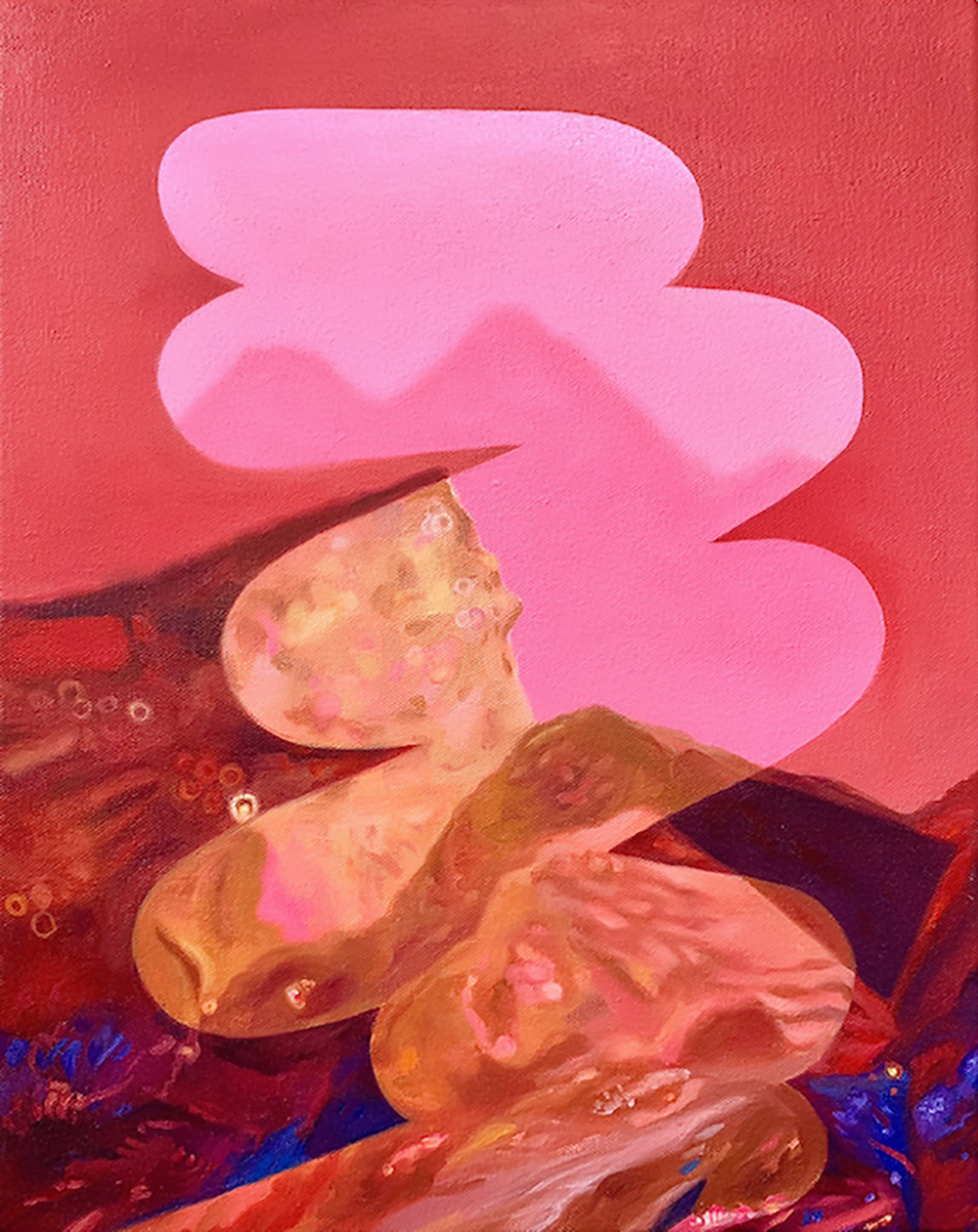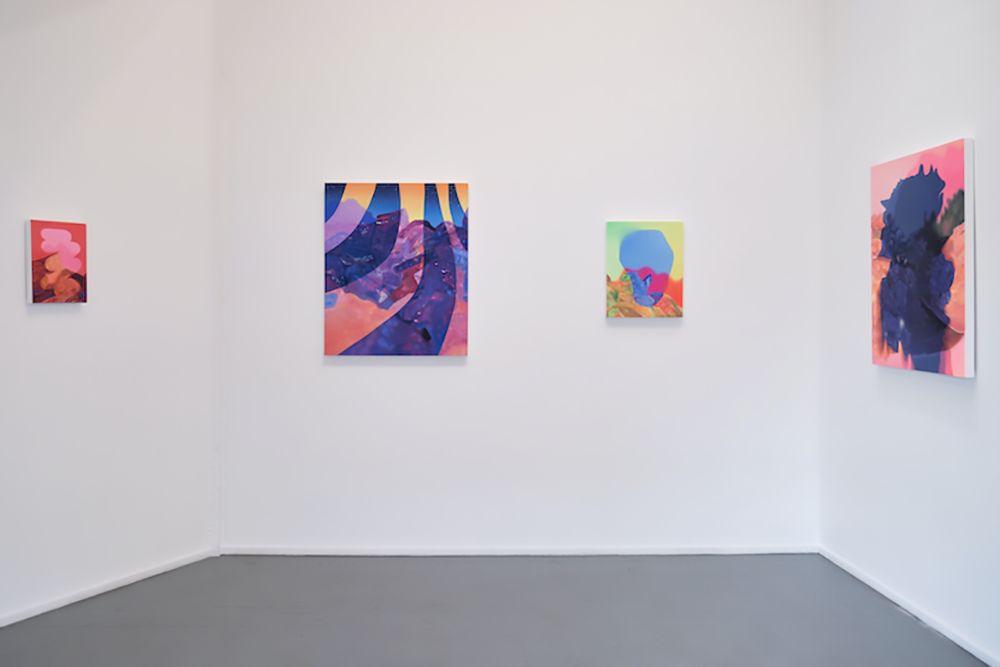Your cart is currently empty!
Amelia Carley Otra Vox

There are few forces in the world as powerful as memory. Reconjuring the fleeting scents of former lovers and the chattering sounds of childhood, memory evinces that life is composed of so much more than the here and now; it summons impressions that both soothe the spirit and pierce the heart. Today, as the stark consequences of faulty collective memory abound, it is worth considering the value of remembering the truth, and—perhaps more pressingly to ask—what sustains the investment in remembering a lie?
In her latest series “Thinking About Forgetting,” Amelia Carley breathes new life into these universal questions, granting them space to expand, contract, and reveal. Inspired by the artist’s upbringing in Colorado’s desert, the exhibition presents a cacophony of eerily bright forms that feel profoundly chimeric in nature. Through these bizarrely constructed worlds, Carley highlights how her seemingly pure experiences with nature are inseparable from systems of violent extraction.

The artist begins her process by gathering debris from the shores of Brooklyn’s Glass Bottle Beach, a location now notorious for its densely packed wreckage. From the collected waste of eroded sea glass, she constructs crystalline models that are then rendered in otherworldly chroma on canvas. The result is a montage of glaringly artificial environments that illustrate Earth’s increasingly transient landscapes and explore fraught relations to the natural world. Within the artificial terrain of Carley’s imagination, mounds of waste glisten with beguiling charm. In Between Deep Cuts (Glass Bottle Beach) (2021) electric hues delight the senses. Layered oil paints stand in for layers of capricious realities, and contemporaneous splashes of day and night blur the lines between realism and reverie. The enormous gem in Lost Layers (Glass Bottle Beach) (2022) sits regally up front with a mountain of waste as its background. Caught Between (Glass Bottle Beach) (2022) stands out as an emblem of the installation’s ethos, its otherworldly compositions of light and shadow sparking both intrigue and discomfort. And just below the surface of this arresting aesthetic, a sobering dissonance can be felt whispering: how does one reconcile beauty so fundamentally intertwined with tragedy?
Within the context of late capitalism (and the manifold crises it has produced) “Thinking About Forgetting” is a timely reminder to interrogate our affective attachments to fabricated realities. It invites viewers to truly reconsider how their childhoods felt and tasted, the genuine histories of the nations to which they pledge allegiance, the toxic consumption fueling the planet’s demise, and the tragic fact that everyone already knew. Though generous with its lessons, “Thinking About Forgetting” is impactful precisely because it refuses didactic self-righteousness, and instead offers a subtler provocation—to question the authenticity of treasured illusions.